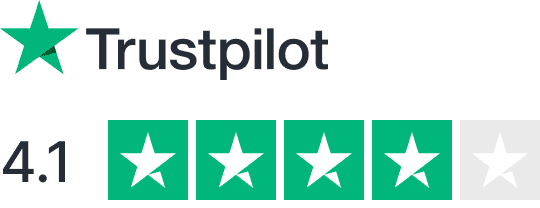Choosing the right vendor in LATAM can make or break your project. Here’s how to evaluate their track record effectively:
- Past Projects: Review their last 3 years of work for on-time delivery, scope management, and problem-solving.
- Client Feedback: Check reviews on platforms like Clutch and Trustpilot, and speak to 3-5 direct references.
- Technical Skills: Verify certifications, regional expertise, and team capabilities.
Key LATAM Considerations: Time zone alignment (UTC-3 to UTC-5), English proficiency, and access to tech hubs like São Paulo and Bogotá.
Tools to Help: Use platforms like Workday, Tableau, or Salesforce to track performance metrics like project delivery, quality, and client satisfaction.
How to Effectively Evaluate a Vendor’s Performance
Core Vendor Assessment Criteria
When choosing a vendor, focus on three main areas: their past project performance, client feedback, and technical skills. These factors help determine how reliable and suitable they are for your needs.
Past Project Analysis
Looking at a vendor’s completed projects gives you a clear idea of their experience and skills. It’s best to review projects from the last three years to see their current abilities. Pay attention to:
- Whether they completed projects on time and within scope
- How well they managed requirements and delivered results
- How they handled industry-specific challenges
- Their ability to scale and allocate resources effectively
Take note of both achievements and setbacks to get a full picture. Request a detailed three-year project history to understand their track record.
Client Reviews and References
After reviewing their projects, dig into client feedback. Use trusted third-party platforms and direct references to gather insights:
| Review Source | Purpose | Key Information to Gather |
|---|---|---|
| Clutch | Independent ratings and detailed reviews | Project scope, timeline adherence, communication quality |
| Trustpilot | Customer satisfaction metrics | Service quality, support responsiveness, overall experience |
| Direct References | First-hand insights from clients | Integration, technical skills, cultural alignment |
Speak with 3-5 clients who’ve worked on similar projects with the vendor. This will give you a well-rounded understanding of their strengths and consistency.
Technical Expertise
Evaluating technical skills requires a methodical approach. Focus on these areas:
Certifications: Verify LATAM-specific certifications and partnerships. Check for credentials that align with regional market needs.
Domain Knowledge: Ensure they’re knowledgeable about:
- Local industry regulations
- Market-specific technical hurdles
- Development practices in the region
- Regional security requirements
Team Strength: Look into their team’s current skills and ability to scale for larger projects.
Regularly reviewing certifications, community involvement, and training ensures the vendor stays up-to-date. In LATAM, also consider cultural and language compatibility. Vendors need to excel not only in technical areas but also in communication and collaboration to deliver successful results.
5 Steps to Check Vendor Performance
Using project reviews and client feedback, follow these steps to evaluate vendor performance with a clear and structured approach.
Reading Case Studies
Use this guide to assess vendor case studies:
| Assessment Area | Key Metrics to Review | Red Flags |
|---|---|---|
| Project Delivery | Sticking to timelines, staying on budget | Frequent delays or budget overruns |
| Technical Solutions | Technology stack, approach to solving problems | Reliance on outdated tools |
| Problem Resolution | Specific challenges addressed, solutions provided | Vague or generic explanations |
Focus on case studies that align with your project’s size and industry. Pay attention to how vendors tackled challenges like cross-border teamwork or time zone coordination in LATAM.
To validate these findings, reach out to their past clients for firsthand insights.
Checking Client References
Speaking with client references can help you better understand vendor performance in three critical areas:
1. Project Management Effectiveness
Ask for specific examples of how well the vendor met milestones and maintained communication.
2. Technical Competency
Confirm the quality and consistency of their solutions across different projects.
3. Cultural Integration
Evaluate how well the vendor’s team adapted, including their language skills and ability to align with your company’s culture.
Verifying Credentials
Ensure the vendor’s claims hold up by checking their credentials in these areas:
Industry Recognition
- Look for ISO 9001 certification.
- Verify partnerships with regional tech organizations.
- Check for LATAM-specific awards or achievements.
Technical Validation
- See if they actively engage in tech communities.
- Review their contributions to open-source projects.
- Confirm ongoing training and certifications for their team.
Performance Metrics
- Assess their project completion rates.
- Look into client retention numbers.
- Check for team stability over time.
sbb-itb-a3fbb4e
LATAM Vendor Requirements
When working with LATAM vendors, factors like time zones, language skills, and access to local talent can make a big difference in their ability to meet your needs.
Time Zones and Language
LATAM vendors operate in time zones close to North America (UTC-3 to UTC-5), which makes real-time collaboration easier. This overlap allows for quicker responses and smoother communication during business hours.
English proficiency across LATAM varies, so it’s important to assess a vendor’s skills in technical, business, and cultural communication:
| Communication Aspect | Assessment Criteria | Impact on Operations |
|---|---|---|
| Technical English | Quality of documentation and code explanations | Improves project clarity |
| Business English | Performance in meetings and email communication | Enhances team collaboration |
| Cultural Context | Familiarity with industry-specific terms | Reduces potential misunderstandings |
These factors, combined with aligned time zones, create a solid foundation for effective teamwork.
Team Integration
To successfully integrate LATAM vendor teams, it’s essential to align cultural and operational practices. Start by setting up clear communication channels and collaboration protocols.
Here’s how to ensure smooth integration:
- Standardized Documentation: Use consistent templates for project documentation to avoid confusion.
- Effective Communication Tools: Choose platforms that support both real-time and delayed communication styles.
- Aligned Workflows: Adopt shared project management methods that respect both local practices and your organization’s standards.
Once these systems are in place, you can better assess the vendor’s ability to deliver high-quality talent.
Talent Pool Assessment
LATAM’s tech talent is on the rise. To evaluate vendors, consider their regional expertise, market stability, and connections to local educational institutions.
- Regional Expertise: Cities like São Paulo, Mexico City, and Bogotá are tech hubs with specialized talent pools. Knowing these strengths can guide your vendor selection.
- Market Stability: Economic conditions vary across LATAM. Focus on countries with stable markets, such as Brazil, Mexico, and Colombia, which currently lead in talent availability.
- Educational Connections: Vendors with links to top technical schools often have access to skilled, up-and-coming professionals and emphasize ongoing skill development.
"Regular market audits and mystery shopping are necessary to ensure vendor compliance and protect brand integrity", states a recent industry report on LATAM vendor management.
Look for vendors who prioritize:
- Employee retention programs
- Ongoing technical training
- Clear career growth opportunities
- Strong ties to local universities
These qualities indicate a vendor’s commitment to maintaining a skilled and reliable workforce.
Vendor Analysis Tools
Modern tools for vendor analysis allow businesses to evaluate LATAM vendor performance using a systematic, data-driven approach, helping leaders make better decisions.
Vendor Management Software
Top platforms like Workday and SAP Fieldglass provide advanced tools for tracking vendor performance. They monitor key metrics such as:
| Metric Category | Key Indicators | Business Impact |
|---|---|---|
| Project Delivery | Completion rates, timeline adherence | Better resource planning |
| Quality Assurance | Defect rates, code quality scores | Improved product reliability |
| Client Satisfaction | Response times, feedback ratings | Stronger business partnerships |
These systems integrate with existing tools, offering real-time tracking and automated reporting. The collected data feeds directly into analytics platforms, enabling deeper insights into trends and performance.
Performance Analytics
Data visualization tools like Tableau and Power BI transform raw data into meaningful insights. With these platforms, businesses can:
- Monitor performance trends over time
- Compare vendors across various metrics
- Spot patterns in delivery quality and timelines
- Build predictive models for future outcomes
This is especially helpful when working with LATAM vendors who may operate in different time zones or cultural contexts. Combined with centralized data, these tools provide a clearer picture of vendor performance.
Data Management Systems
Platforms like Salesforce and Microsoft Dynamics centralize vendor-related data, offering features like real-time risk assessments and collaboration tools. These systems simplify communication and provide a single source of truth for vendor performance tracking.
When evaluating vendor analysis tools, look for options that integrate seamlessly with your current systems and support multiple languages – key for managing LATAM vendor relationships effectively.
CareMinds: Vendor Profile

When evaluating vendors, it’s essential to consider not just their promises but also their track record of real-world implementation. CareMinds stands out with its well-defined processes and proven results.
CareMinds has established itself as a leader in LATAM staff augmentation, excelling in both talent management and service delivery.
Talent Screening Process
CareMinds follows a thorough vetting process, which includes technical assessments, background checks, and interviews. This approach allows them to match candidates to roles in as little as three days. Each candidate is evaluated for:
- Technical skills through detailed assessments.
- Work history verification to ensure credibility.
- Cultural fit and expertise through in-depth interviews.
This ensures clients only receive highly qualified professionals.
Contract Options
CareMinds offers flexible contract terms to meet various client needs, including:
- A 2-week risk-free trial period to test the arrangement.
- Flexible termination terms for easy team adjustments.
- Long-term buyout options available after one year.
These options allow businesses to customize their partnerships based on their specific goals.
HR and Administrative Services
CareMinds also provides a range of HR and administrative services to simplify staffing and compliance. These include:
- Talent matching to streamline the recruitment process.
- Contract management support to ensure regulatory compliance.
- Team integration assistance to improve collaboration.
With access to a network of over 1,000 vetted developers and 100 recruiters across LATAM and the EU, CareMinds consistently meets diverse staffing needs.
Conclusion
Evaluating LATAM vendors requires a close look at their track record, client feedback, and technical skills. These factors are essential for making informed decisions about potential partnerships.
Businesses that take the time to carefully assess vendors often enjoy smoother project rollouts and stronger long-term collaborations. Focus on vendors with proven success in previous projects, well-defined talent selection methods, and adaptable engagement models to ensure seamless team integration.
Don’t overlook practical details like time zone alignment and communication practices while weighing technical capabilities. Striking this balance helps create partnerships that align with your goals and deliver results.
Use these insights to choose a vendor that supports your business success.
















